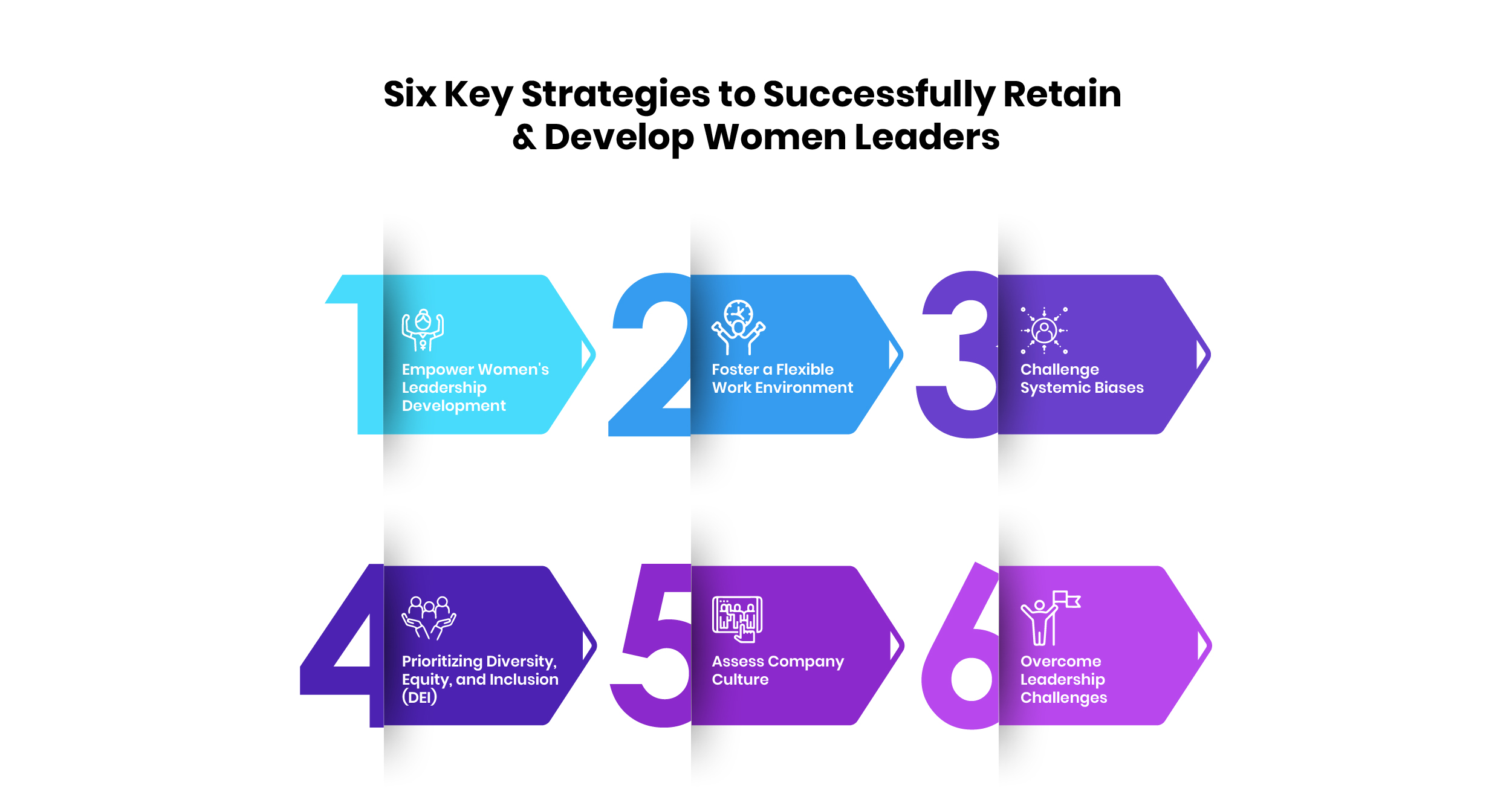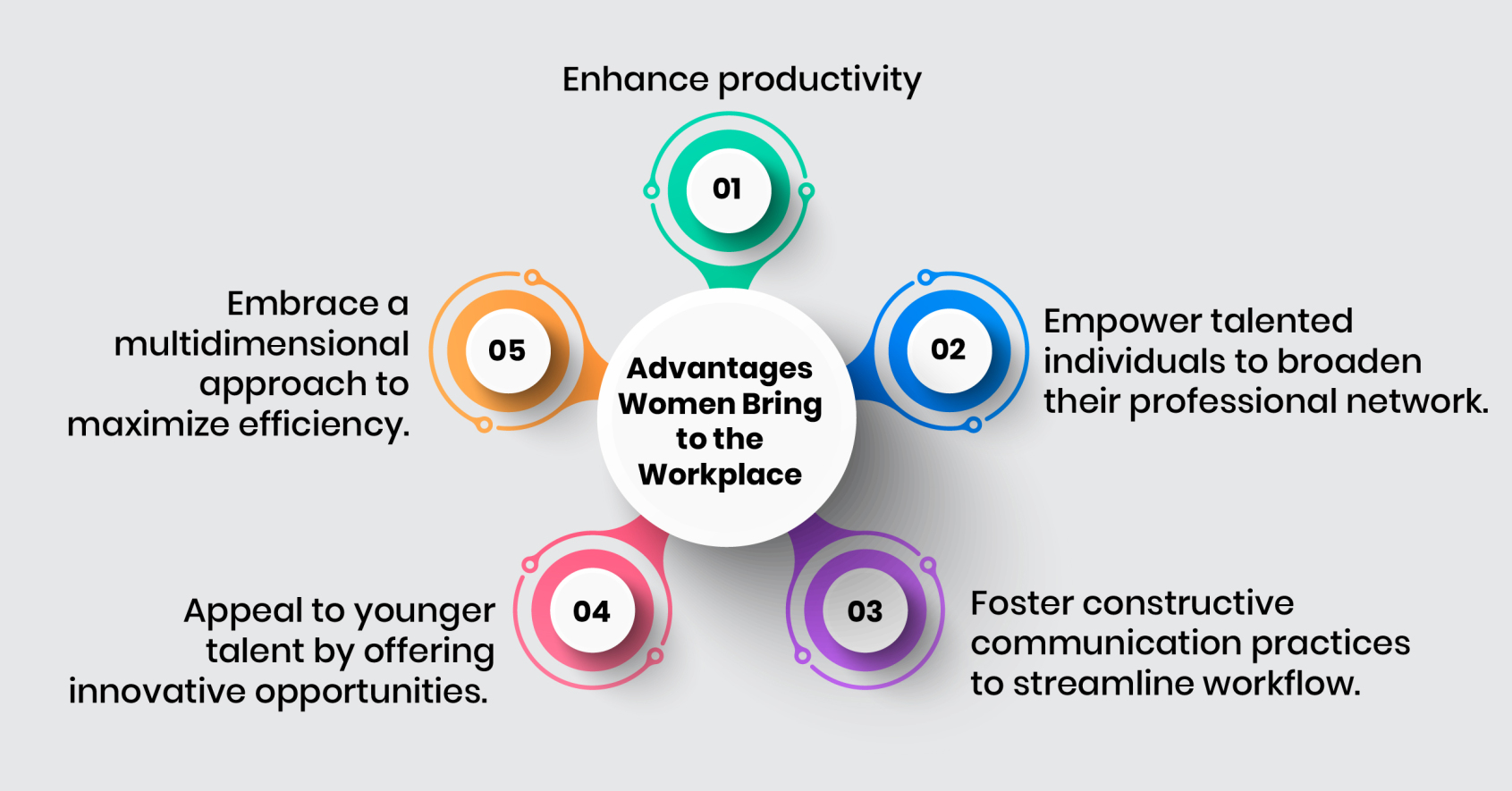
We typically find women to be underrepresented in leadership roles, particularly in STEM fields. While they make up 29.4 percent of entry-level professionals and 29.9 percent of senior professionals, their representation drops significantly in managerial or director positions to one-quarter (25.5 percent and 26.7 percent, respectively). Furthermore, representation of women in higher-level leadership roles, such as Vice president and C-suite positions, declines even further to 17.8 percent and 12.4 percent, respectively.
So, what measures can you take to prevent this? How can HR prioritize the retention and development of women leaders? This blog post holds the answers to these questions. Keep reading to delve deeper and gain valuable insights.
What do Women Want from a Workplace?
Women in senior positions, to this date, continue to face a lack of support in developing leadership skills. Therefore, organizations are responsible for implementing improved policies and providing opportunities for women. Organizations must have a:
- Purposeful Work-Life Alignment: Women prioritize having a job that integrates well with other aspects of their lives, followed by enjoying the work they do and feeling their job makes a meaningful impact. Many seek roles that resonate with their values and contribute to a balanced work-life dynamic, a concept known as "a calling."
- Flexible Work Arrangements : Flexibility in where, when, and how they work is highly valued by women. This includes perks such as paid time off, healthcare benefits, flexible schedules, opportunities for remote work, and career advancement options.
- Equal Leadership Opportunities : Women desire equal access to leadership positions, promotions, and professional development opportunities. While they are just as interested as men in advancing their careers, they may face unique challenges related to confidence in their qualifications like gender biases, and gender disparity in pay and opportunities.
Prioritizing the Retention and Development of Women Leaders.
To prioritize women leaders, it's essential to assess your company's policies, culture, and mission regarding their growth and support. Consider the following questions:
- Are they actively involved in mentoring programs or initiatives within the organization?
- Do they provide guidance, support, and opportunities for skill development to emerging women leaders?
- Is there a formalized mentorship program in place that matches senior women leaders with emerging women talents?
- Is the company committed to providing development opportunities for women at all levels?
By honestly evaluating these aspects of the company's policies, culture, and mission, it becomes possible to identify areas of strength and areas for improvement in supporting the growth and success of a woman within the organization.
Six Key Strategies to Successfully Retain and Develop Women Leaders
To foster an equitable work environment that supports, retains, and develops leaders, organizations must adopt a comprehensive, "whole systems" approach. Here are six strategies to consider when promoting and developing women leaders -

- Empower Women's Leadership Development : Organizations must ensure that women leaders have access to tailored interventions aimed at addressing their unique challenges and developing essential competencies. In a workspace, women commonly face challenges such as establishing credibility, managing organizational dynamics, negotiation, and influence. Therefore, focusing on competencies like managing organizational complexity and strategic thinking is essential for their development.
- Foster a Flexible Work Environment: Today's workforce is all about flexibility. Organizations must invest in flexible leadership development experiences that accommodate the needs of women leaders. It is the key to attracting and retaining top talent, particularly women leaders. By fostering a flexible and performance-based culture, and supporting employees in delivering exceptional results, organizations can enhance productivity and satisfaction. Additionally, by offering flexible work options, your organization demonstrates empathy and prioritizes performance, especially important for female employees who may have caregiving responsibilities.
- Challenge Systemic Biases: It is the role of HR to recognize and address gender disparities in leadership. Eliminating bias requires systemic change within the organization. You need to begin by evaluating how unconscious biases impact opportunities and motivation for women and prioritize gender equity initiatives. Leaders at all levels must be trained to identify and address biases, creating an environment where women feel empowered to speak up.
- Prioritizing Diversity, Equity, and Inclusion (DEI): Organizations should also focus on evolving their culture to prioritize equity, diversity and inclusion, with a particular emphasis on equity. This involves examining and improving various aspects of the organization, including meeting scheduling, networking opportunities, mentoring programs, and talent management policies.
- Assess Company Culture: In addition to implementing DE&I and training programs, evaluating company culture is critical for developing women leaders. You can begin by identifying unconscious biases and everyday experiences that hinder women's advancement is essential for creating an inclusive environment. Removing these anti-inclusive attitudes fosters transparency and ongoing professional opportunities that are vital for women in leadership development.
- Overcome Leadership Challenges : Lastly, it is also important for HR to assist in overcoming leadership challenges and to assist female professionals in navigating workplace challenges and biases. Developing a women's leadership strategy empowers female professionals to make informed decisions about their careers.
Benefits Of Retaining Women Leaders in a Workspace
Participants from organizations with a high percentage of women were more likely to cite positive and meaningful organizational culture as a reason for staying with their current employer. Due to factors such as:
- Enjoyable work
- A job that aligns well with other aspects of their life
- Opportunities to make a difference
There are several benefits of having more women in the workplace, particularly in terms of employee engagement and retention—

- Enhance Productivity.
- Empower talented individuals to broaden their professional network.
- Foster constructive communication practices to streamline workflow.
- Appeal to younger talent by offering innovative opportunities.
- Embrace a multidimensional approach to maximize efficiency.
Most importantly, these benefits are true across various demographics, including age, industry, organization size, leadership level, ethnicity, and gender.
Conclusion
The involvement of women in the workforce has undergone significant changes over the past few decades. Enhancing the workplace environment for women often involves recognizing them as multifaceted individuals and acknowledging their identities beyond the professional realm.
Organizations must understand that HR policies and initiatives are merely one component of the necessary preparations and encouragement for women employees to pursue leadership roles. A comprehensive approach is required, and it begins with your organizational culture.




